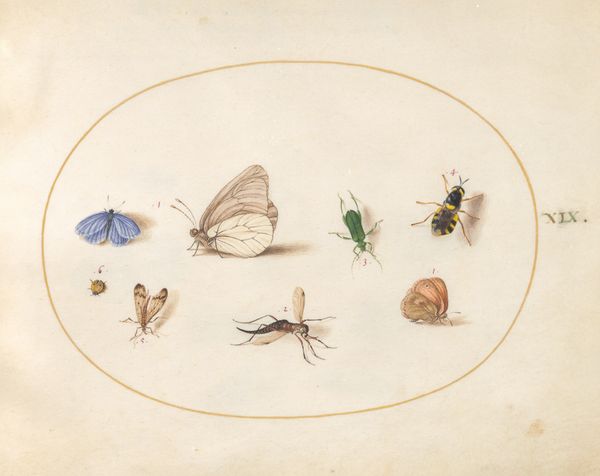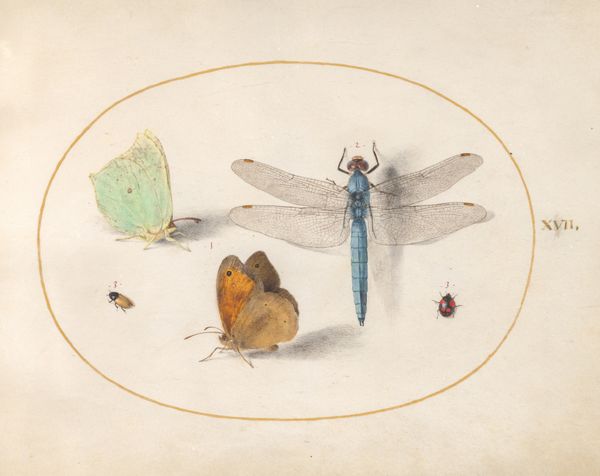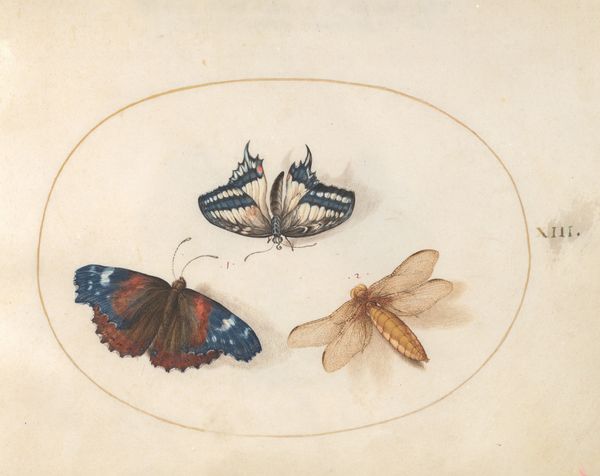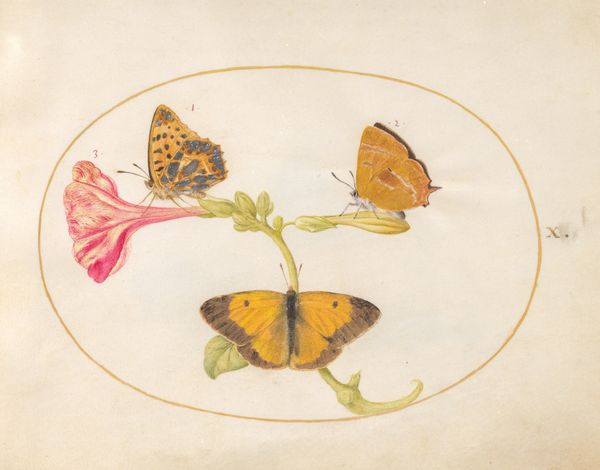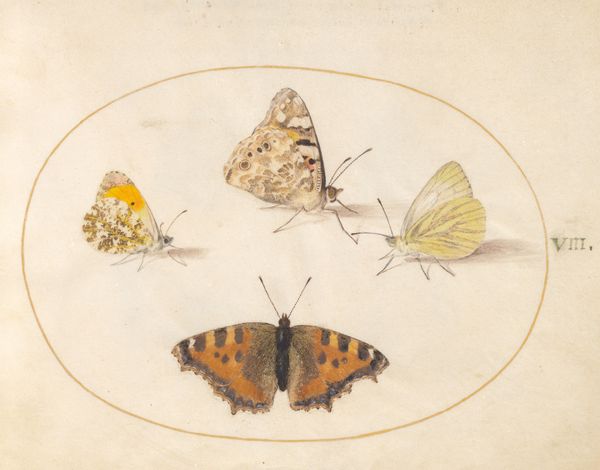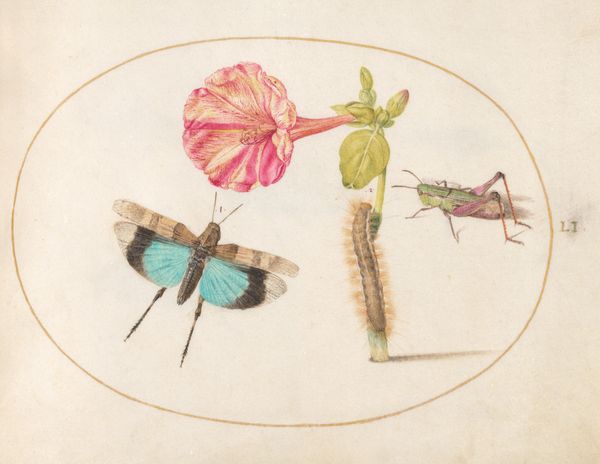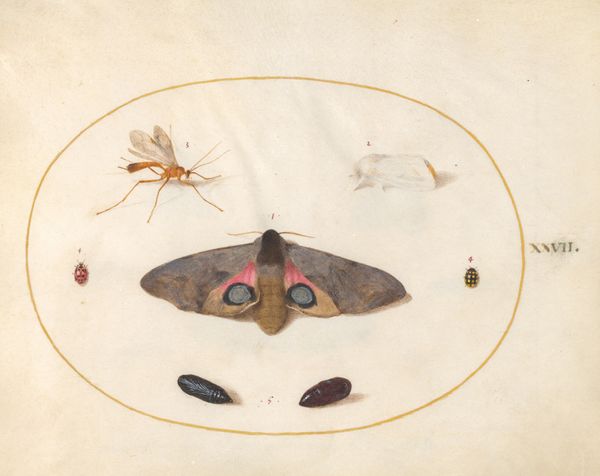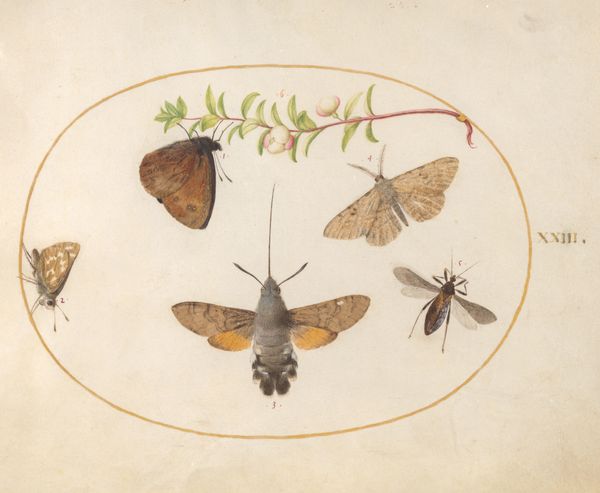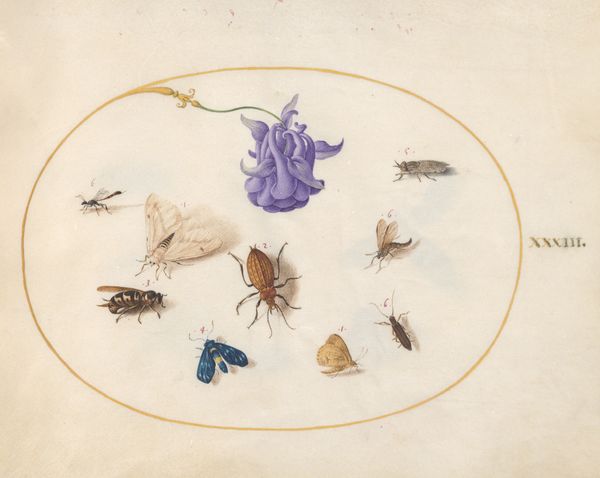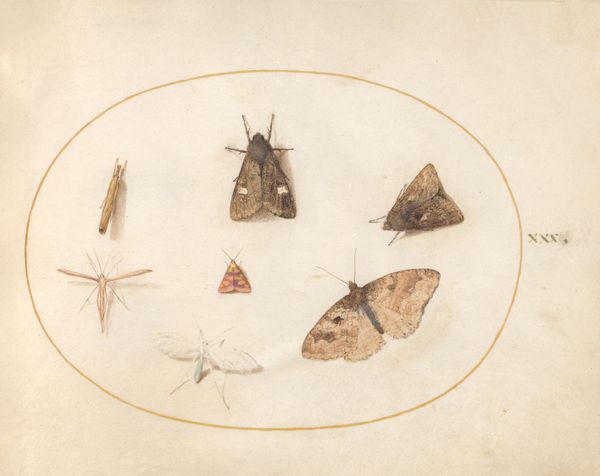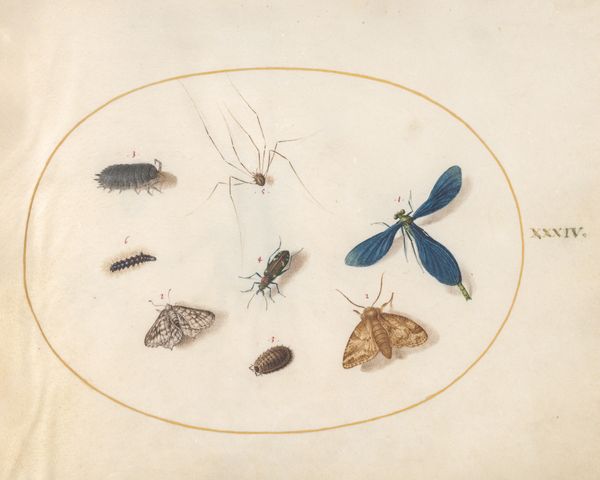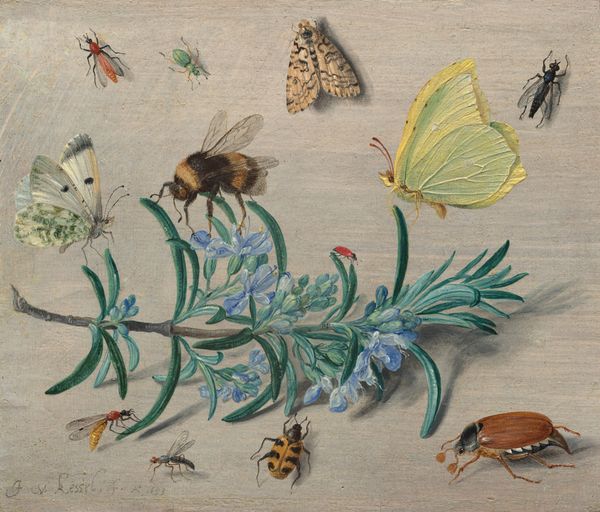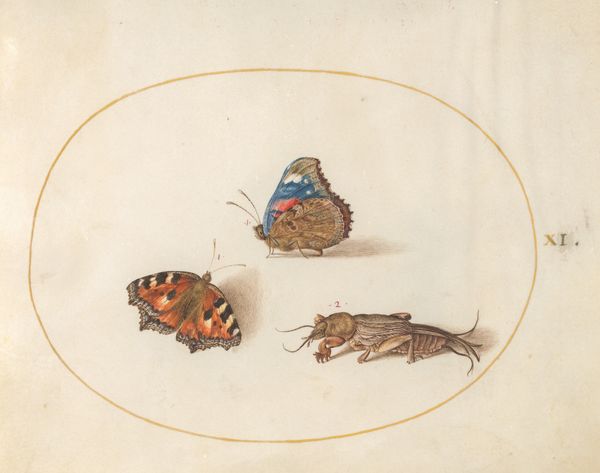
Plate 22: A Cinnabar Moth and Butterflies with Other Insects and a Snapdragon c. 1575 - 1580
0:00
0:00
drawing, coloured-pencil, watercolor
#
drawing
#
coloured-pencil
#
watercolor
#
coloured pencil
#
watercolour illustration
#
botanical art
#
miniature
#
watercolor
Dimensions: page size (approximate): 14.3 x 18.4 cm (5 5/8 x 7 1/4 in.)
Copyright: National Gallery of Art: CC0 1.0
Curator: Here we have "Plate 22: A Cinnabar Moth and Butterflies with Other Insects and a Snapdragon" by Joris Hoefnagel, dating from around 1575 to 1580. The work is rendered with colored pencil and watercolor. Editor: What strikes me immediately is its jewel-like quality, like a page from an illuminated manuscript celebrating the minute details of the natural world. It feels very intimate and precise. Curator: It’s certainly intimate in scale. Hoefnagel was a master of miniature painting, and this exemplifies the intersection of art and scientific observation during the Renaissance. Consider the intense labor involved, each tiny stroke documenting specific specimens. Editor: Yes, the painstaking process is palpable! Each insect and petal feels lovingly rendered, not just observed but truly felt. Look at how the velvety texture of the moth's wings is captured; it's like reaching out and touching it. Curator: And it's not merely decorative. The rise of natural history studies meant accurate visual records were essential. The materials – the pencils and watercolors – had to be prepared meticulously to achieve such clarity and detail. Patronage played a crucial role too, of course. Without wealthy collectors, Hoefnagel’s craft wouldn't have been sustainable. Editor: Right, there's an entire network of human activity implied, from the harvesting of pigments to the cultivation of knowledge. Yet looking at it, I can't help but think about transformation, of things changing shape like the caterpillar nestled so diligently among the snapdragon flowers... it stirs something elemental, the beauty inherent in natural process. Curator: It's a beautiful encapsulation of its era: a reflection of both growing scientific curiosity and a continuing reverence for the natural world as a source of wonder, carefully cultivated through the art object and the economic and social realities behind its making. Editor: It's a gentle reminder that even within meticulous systems and labor-intensive practices, there's room for that leap of intuitive connection, a moment of recognizing oneself reflected back from the fragile wing of a moth.
Comments
No comments
Be the first to comment and join the conversation on the ultimate creative platform.
